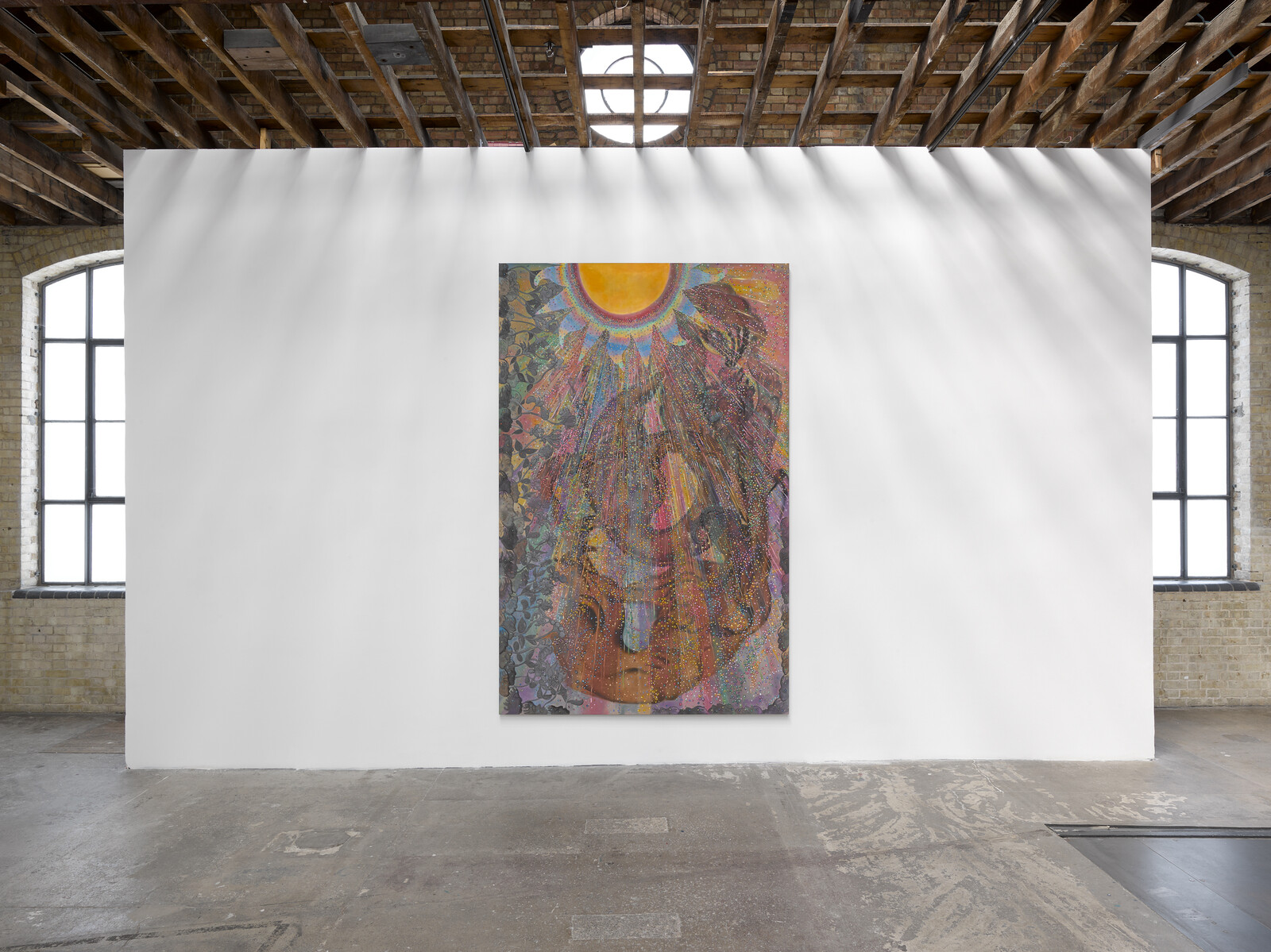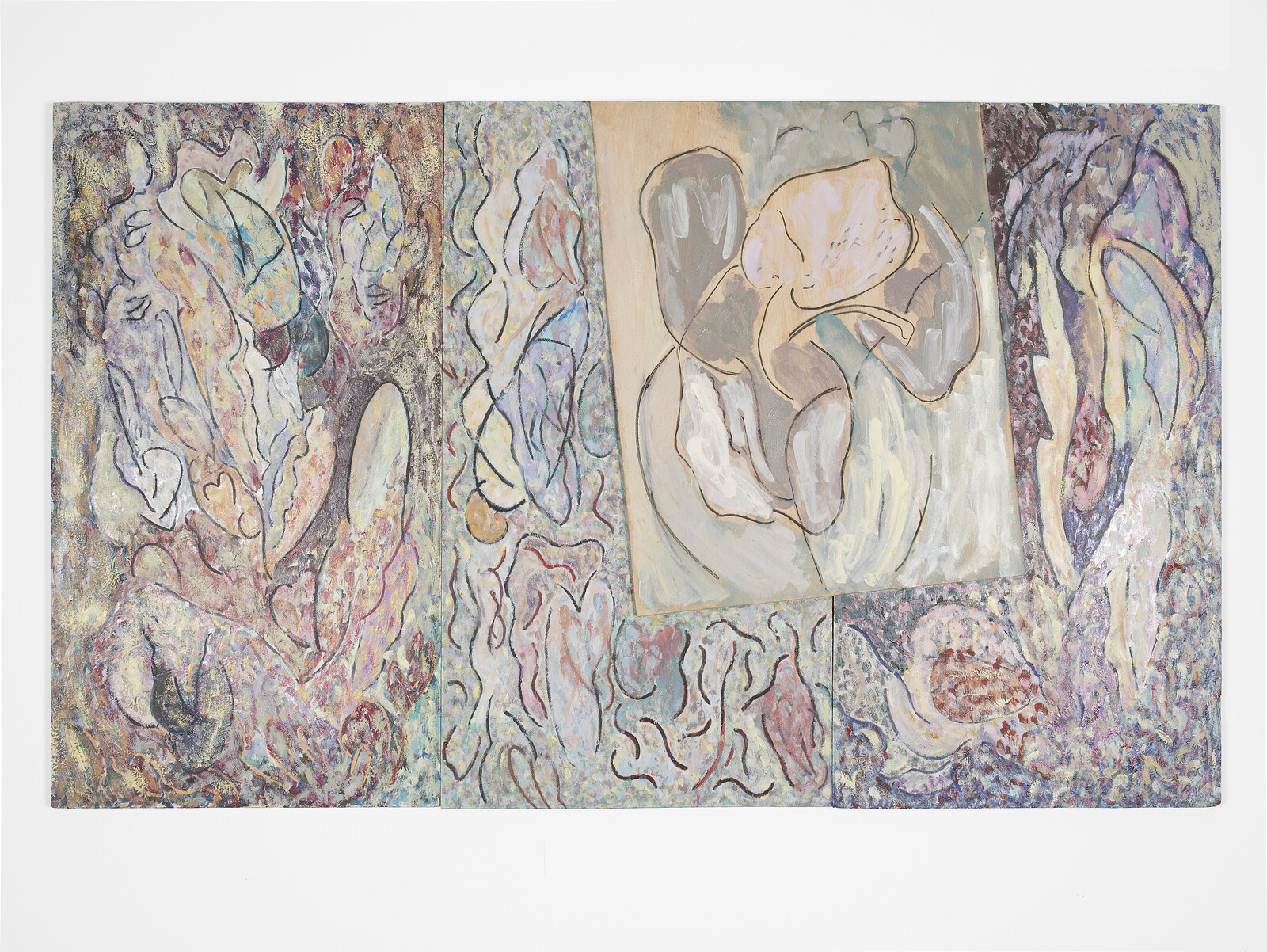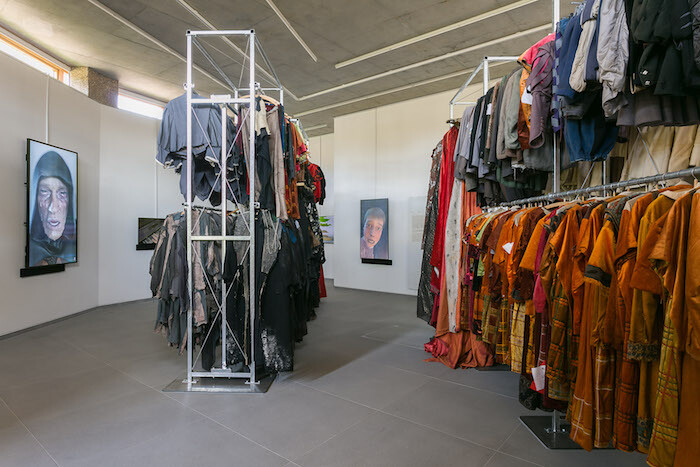Categories
Subjects
Authors
Artists
Venues
Locations
Calendar
Filter
Done
June 29, 2023 – Feature
London Gallery Weekend
Orit Gat

This year’s edition of London Gallery Weekend suggested something that initially surprised me: that the joy of seeing multiple shows in one weekend can be less in new discoveries than in meaningful re-encounters. Looking at Jadé Fadojutimi’s three-by-five-meter painting And willingly imprinting the memory of my mistakes (2023)—included in “To Bend the Ear of the Outer World,” an exhibition of contemporary abstraction curated by Gary Garrels at Gagosian—I thought, I still love this. I first encountered Fadojutimi’s work as part of the 2021 Liverpool Biennial; in this more formalist context I can see how the things I loved then—its blending of oil, pastel, and acrylic in one canvas, its massive presence—are in dialogue with painters I’ve been following for years. The invention and freshness of Laura Owens’s approach to painting is confirmed by every re-encounter; I continue to be amazed by how Charline von Heyl’s Circus (2022) evokes its colorful subject through abstract patterns of gray, black, and white.
Many galleries chose to dedicate their London Gallery Weekend shows to painting, and I loved many of the paintings on view. I was impressed with Shaan Syed’s four works at Sundy, which depict forms from the natural world—like the rubber plant—as …
July 15, 2020 – Review
Marc Camille Chaimowicz’s “Paintings…”
Cora Gilroy-Ware

As clichéd as it seems today, the association of pink and blue with girls and boys is a relatively recent notion. In both style and color, infants’ clothing was largely gender-neutral as recently as the early twentieth century, and it was not until the 1980s that the pink/blue code was fixed to the gender binary. Almost two centuries earlier, Johann Wolfgang von Goethe projected multiple tints and shades onto girls and women: the “female sex in youth,” he writes in Zur Farbenlehre [Theory of Colors] (1810), “is attached to rose-color and sea-green, in age to violet and dark green.”
The alignment of color with gender now seems antiquated. Yet as I walk into “Paintings…,” the latest installation by Paris-born, London-based artist Marc Camille Chaimowicz, I cannot help but notice precisely the feminine palette Goethe described. Rose, sea-green, and violet, with passages of darker green to offset the paler shades, proliferate throughout Cabinet’s exhibition space. The environment offers a subtle, spatial engagement not with feminist discourse, girlhood, or womanhood, but with femininity itself: the material residue of tastes, styles, and their attendant hues that modernity has projected onto people labeled female. Much second-wave feminist literature aims to liberate the female body …
June 1, 2018 – Review
Ed Atkins’s “Olde Food”
Patrick Langley

A boy in a bruise-pink jacket jogs through a dusky idyll, limp-kneed and panting for breath. The grass that flanks the path is dappled with blooming flowers: purple, yellow, orange, and white. In the foreground is an upright piano, incongruously plonked between two trees. The boy staggers past it and out of sight. Seconds later, he’s back where he started. He falters past the piano, vanishes, and rematerializes in an endless, purgatorial circuit. He looks exhausted. Watching this digital animation, I begin to feel exhausted too. Is he being punished, condemned to enact a pitiless ritual? If so, for what purpose?
Across from Good Wine (the animations all date from 2017, the year they were shown at Berlin’s Martin-Gropius-Bau), and past a pair of monumental steel clothes rails hung with a spectacular array of old opera costumes acquired from the archives of the Deutsche Oper Berlin (Masses 1 and 2, 2018), a salvaged door is mounted to the wall (Untitled, 2017). Its darkly varnished surface is laser-etched with a cryptic text: one of several such works (all untitled) co-written by Atkins and whoever’s behind the acerbic, anonymous blog Contemporary Art Writing Daily. Some offer arch commentaries on the exhibition (“Old food …